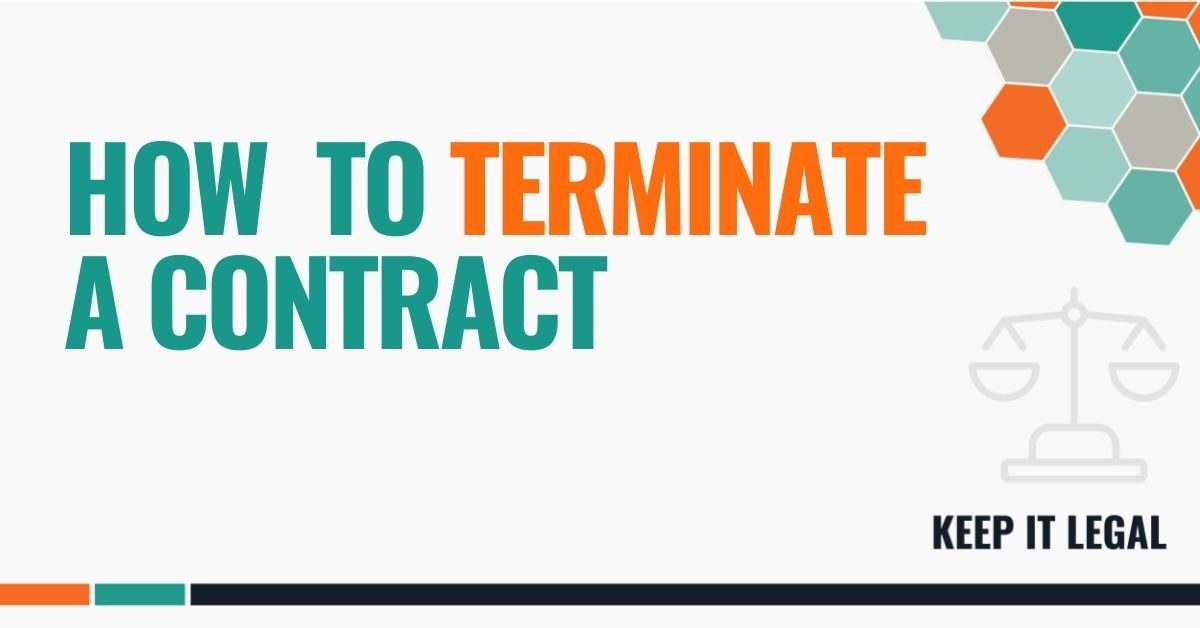Every business owner enters into a contract hoping that it’s going to work out perfectly and they’ll never need to terminate it. But often, for a variety of reasons, there’s a need to take action to bring a contract to a close. This is true whether you’re working with an independent contractor or a large company.
I’ve found that some clients have never put much thought into the contract termination process. As with most things, it’s best to start at the beginning. When you’re actually negotiating the contract, take the time to consider why you might need to get out of the agreement, and what that might look like. If you’re working with an experienced business attorney, they will probably have a good idea what to consider at this point.
But let’s say you didn’t give those clauses a lot of consideration, and now you’re down the road and need to figure out your best move. Now it’s time to carefully review the document and see what your options are.
Everything in this blog post should be considered only a general description of common contract terms. Be sure to consult your strategic legal counsel as to the specifics of your situation.
Business contracts often have some combination of three different types of termination clauses: termination for cause, termination for convenience, or termination based on time.
Termination for cause means you are allowed to leave the contract based on the act or omission of the other party. This could range from breach of contract to a simple failure to deliver on certain obligations. The contract might say, for example, that you can terminate the contract if the other side hasn’t sold X widgets by Y date. Well, if Y date has come and gone, and X widgets haven’t been sold, then you can most likely terminate for cause.
Termination for convenience means that one or both parties can bring the contract to a close for no reason at all. In an employment context, this would be referred to as “at-will”. If the contract gives you the right to terminate for convenience, you can choose to do so whenever you wish.
Termination based on time means the contract comes to an end at a certain predetermined date. Always review this type of clause carefully, because many contracts will say, for example, that it’s a one-year contract, but that it automatically renews for additional one-year terms unless you provide notice that you don’t want it to renew.
Any time of termination clause will often have procedures associated with it. For example, you may have the right to terminate with 30 days’ written notice. Make sure you understand what “written notice” means. Some contracts still require notice by mail, or by messenger service (like FedEx or UPS). Other clauses will list a variety of acceptable forms of notice, including email and even fax. When you’re taking action to terminate a contract, it’s worth making sure all these details are handled properly.
You should also review any penalties that the contract may impose for early termination. This could be referred to by a variety of terms, including early termination fees and liquidated damages.
What if the contract doesn’t have a termination clause? Or maybe it’s time-based, but the termination date is a long way away and you need to get out of the contract early? You may still have options.
In some cases, contracts can be terminated based on “frustration”. This means that the terms are impossible for you to fulfill. Be very careful about this—”impossible” doesn’t just mean “I don’t want to do it” or “it’s not as profitable as I thought it would be”.
Many contracts include a force majeure or “Act of God” clause that allows one or both sides to get out of the contract based on factors outside of their control (such as war, natural disaster, or a pandemic, to be more topical).
Even if there is no written “termination for cause” term, if the other side has breached their contractual obligations, that may give you the opportunity to terminate. Typically a minor breach (like paying a day late) isn’t sufficient to terminate for cause; the breach usually has to be “material”, meaning it’s significant enough to strike at the heart of the contract, and even in the case of a material breach, the other side often has the opportunity to “cure” or fix the breach within some reasonable amount of time.
As you can see, the best approach is to take your time to go over all of these possible scenarios with your strategic legal counsel before signing the contract, so you’re prepared for the foreseeable twists and turns. But if you find yourself in a contract that’s not working out, don’t despair, you may still have options.
If you need help getting into or out of a contract, feel free to contact me.


